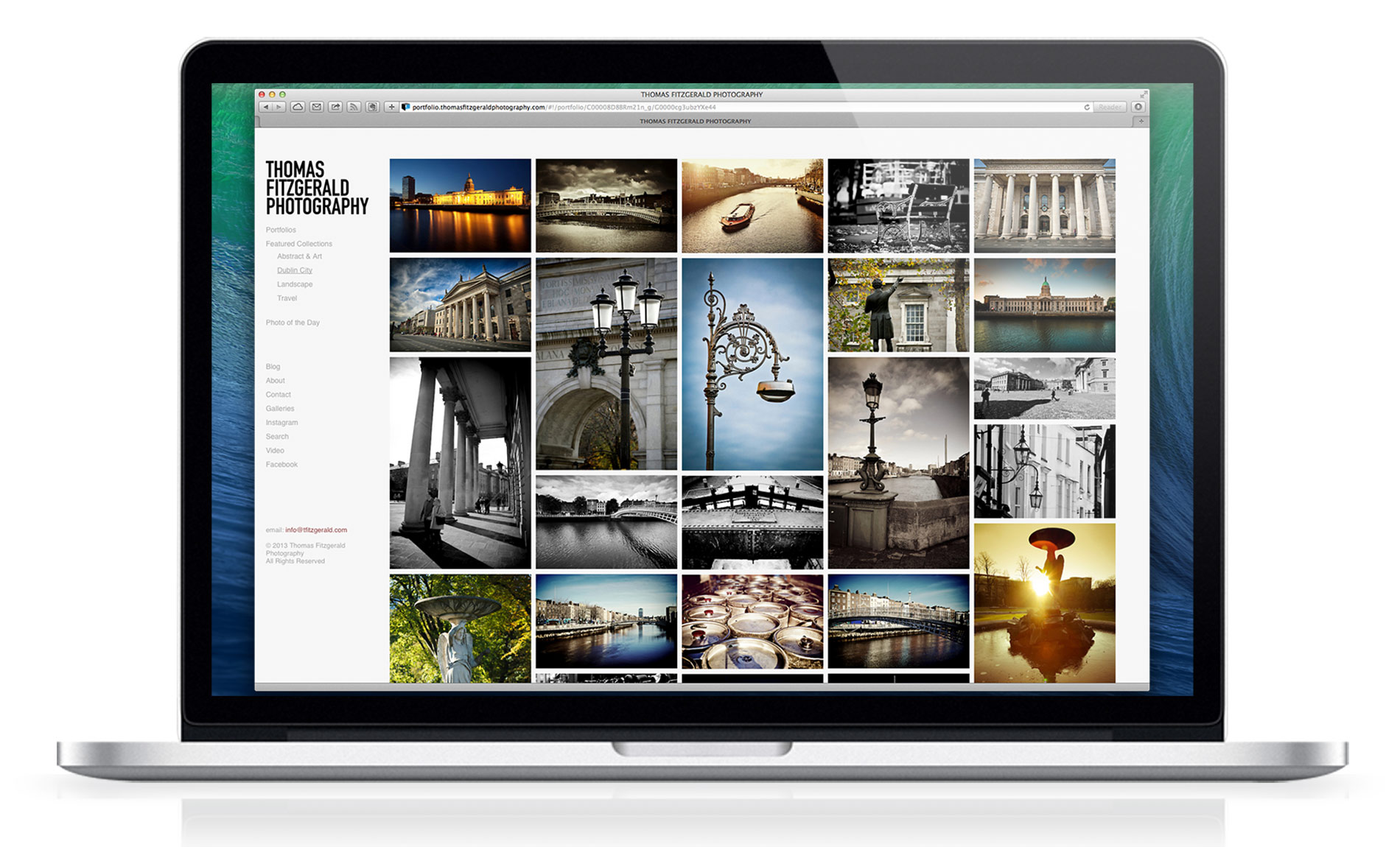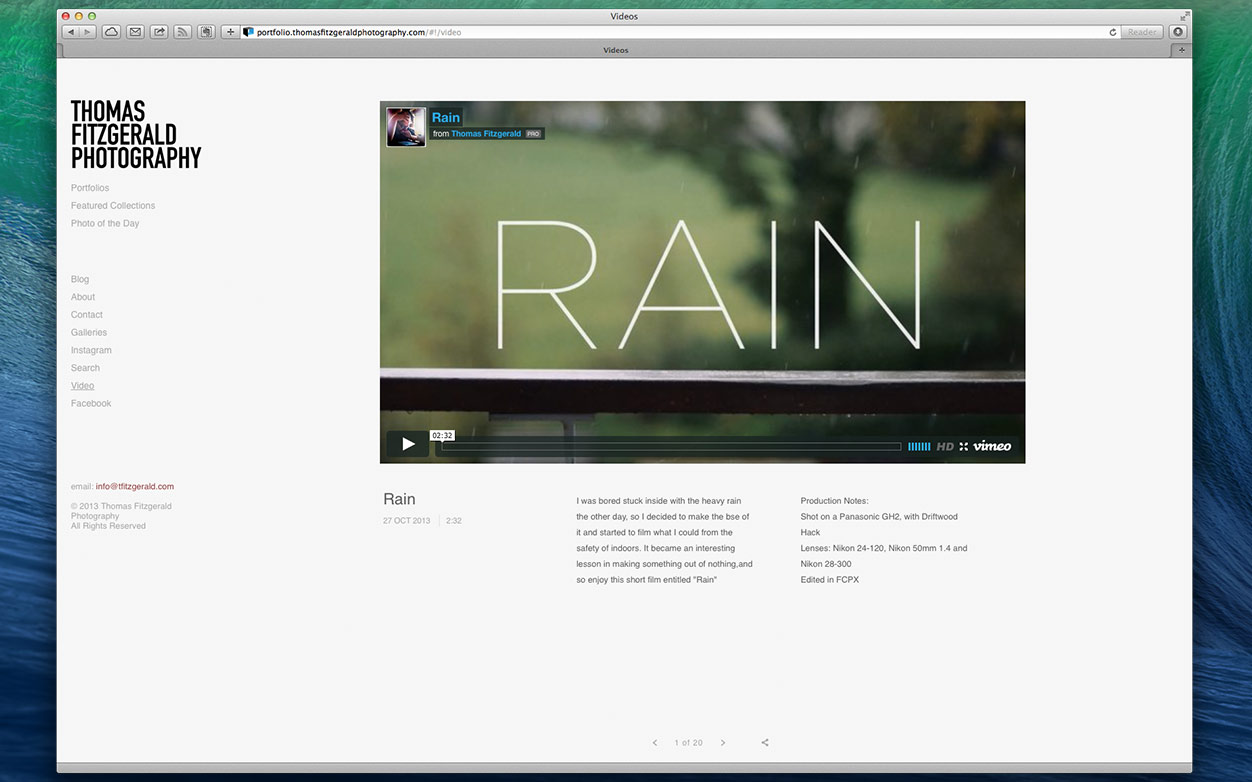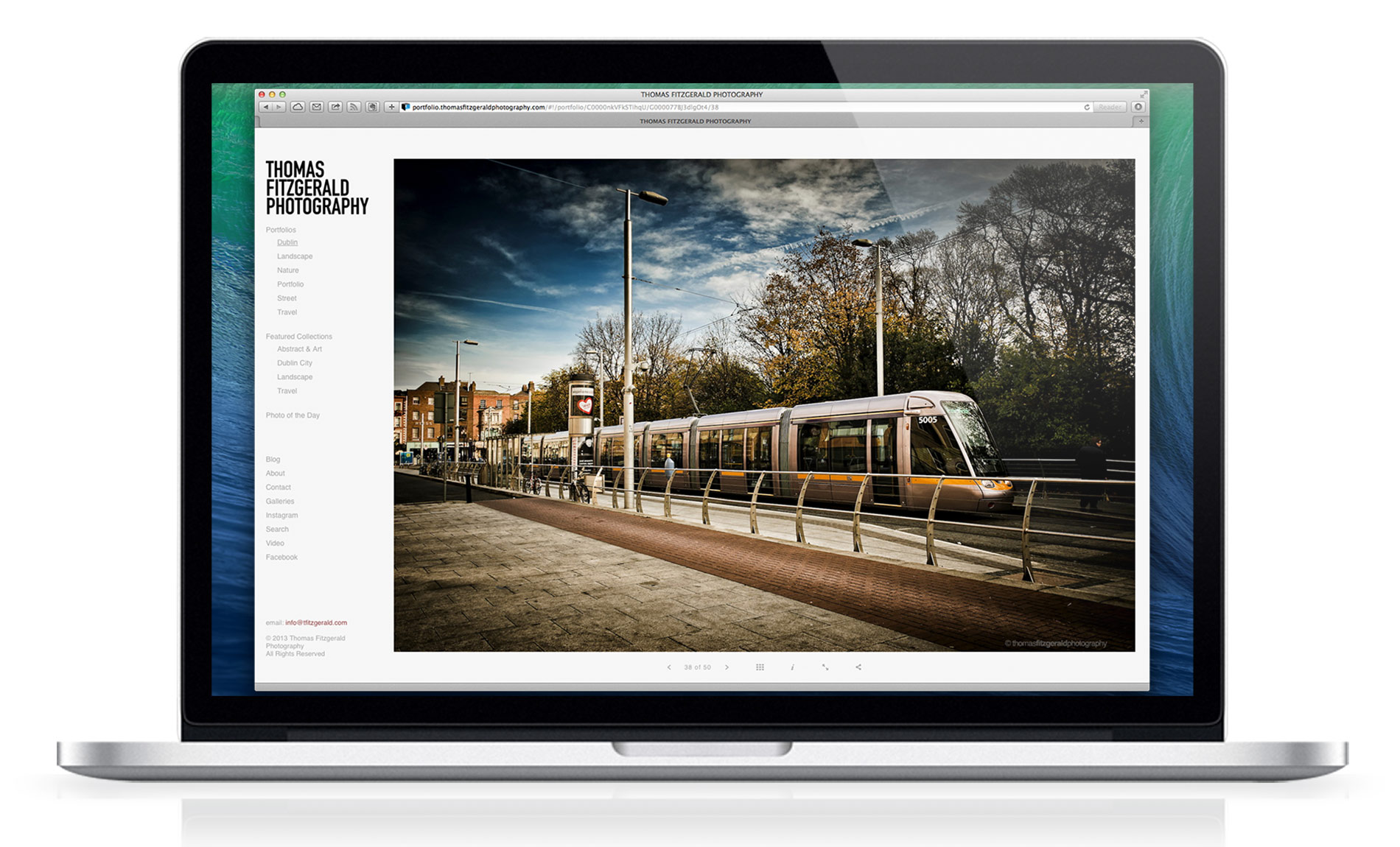How I Updated My Portfolio with Lightroom and Photoshelter's Beam
There’s been one aspect of my web presence that has always been sorely lacking, and that’s my portfolio. Every time I’ve gone to work on it I’ve ended up playing around with the design or the layout, and ultimately promising myself that I’ll go back to it and finish putting the actual photos up, as well as keeping it updated, but usually that’s the last I do with it for several months. Well, no more, because I’ve finally finished my portfolio website. I have managed not only to finsih sorting out my portfolios, but also set up the structure so it’s easy to keep updated. And it’s all down to a combination of Lightroom’s publishing workflow and Photoshelter’s excellent “Beam” website templates.
I’ve been a user of Photoshelter for several years. The company provides an excellent back-up and e-commerce service for photographers. I’ve never been great at maintaining my online presence though and I had actually been considering moving my images from photo shelter over the last while. The main reason had been that while the company always offered the ability to crete online portfolios and websites through their service they had been relying on Flash for their delivery technology until relatively recently. However, they overhauled the website creation part of their service earlier this year with a whole new set of modern, html 5 responsive templates. These have much better functionality, and a much easier way to customise the design and update the content. They call this newer set of designs and functionality “Beam” and I had actually switched my Photoshelter site over to Beam earlier in the year, but I didn’t have the time to properly go through it and set it up properly.
I finally set aside a significant block of time last week to get it organised, and so, I set about changing the template I had been using to properly match my blog (which was the main destination for my photography presence), and also to finally set up some proper portfolios based on my photography. The latter I managed to achieve using Lightroom and Photoshelter’s publishing service plug-in for Lightroom. This allows me to set up and manage my portfolios within Lightroom as collections, and have those collections update on my website automatically. In fact, I actually took it a step further. Because I publish my photos across several services, I created normal collections for each of my portfolios (Landscape, nature etc) and then created smart collections inside the publish service, which are keyed to the corresponding normal Lightroom collection. This way, all I have to do is update the master collection for a particular portfolio, and it updates across all the services I publish too. This is one of the features I really like about Lightroom and it works so well with Photoshelter. I’ve also been trying out the new Smug Mug too, and I’m still evaluating that, so at the moment I’m using this technique to publish to both.
I discovered a few other niceties about Photoshelter’s Beam over the last week while playing with it. There is a really seamless way to integrate with Instagram and Vimeo, and they both just show up as a seamlessly integrated part of the whole site. Overall, it makes the entire presence very professional and complete, and coupled with my linked wordpress blog (i.e. this one) I’m really happy with the result. I hoe you like it too. If you are looking for a way to have a portfolio website, I can highly recommend them (and no, I’m not getting a kickback!)
There are still a few things about the service that I hope they will improve though. For a start, there doesn’t seem to be a way to directly link to an image (the actual image file that is - you can link directly to an image's information page). You can do this from Smug Mug, and it makes it easy to post images to your blog directly from the service, so that you can make it easy for your visitors to buy prints for example. The sharing function also does’t work particularly well. For example, if I want to share an image on Tumblr, it only shares a link and there’s no way to share the actual image. Despite these niggles though, I’m very impressed. Photoshelter have committed to continually improving the service too, so I’m looking forward to see what they do in the future.










